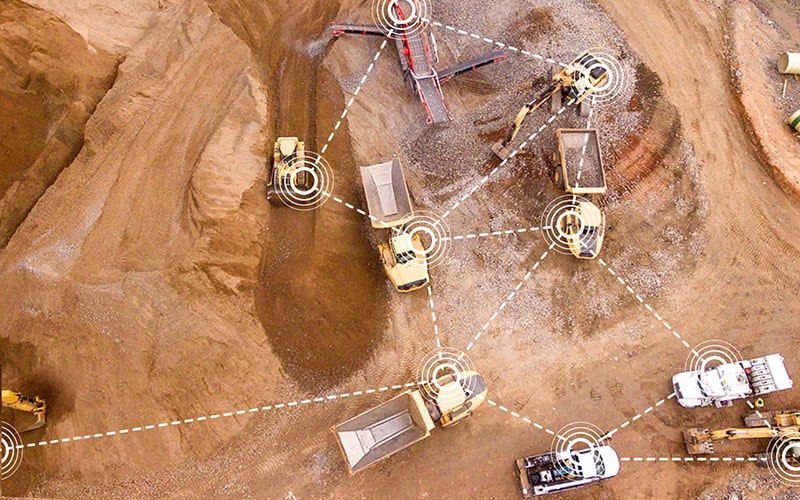Agricultural Connectivity Boost: John Deere
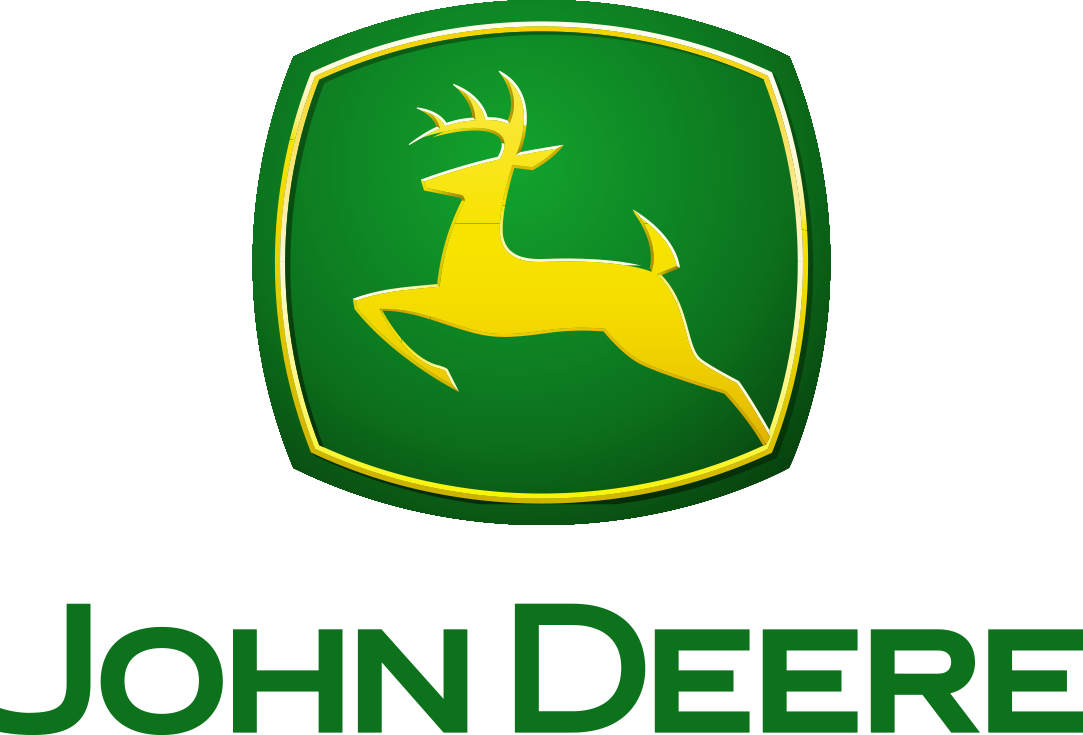
MachineSync is a testament to John Deere’s commitment to advancing agricultural practices. At its core, the system facilitates machine-to-machine communication, allowing farm equipment to operate in perfect coordination.
With machinery roles defined as ‘Leaders’ and ‘Followers,’ the system ensures that tasks such as harvesting and grain collection are seamlessly synchronized. Leaders guide the operation, setting the pace and direction, while Followers automatically sync their movements and tasks to the Leader’s actions once they enter a predefined operational zone.
By enabling machines to communicate directly, MachineSync minimizes overlap and missed spots, ensuring that every inch of the field is covered optimally.
MachineSync aims to seamlessly harmonize the movement and operations of various farm machinery. To achieve this, the system operates within a defined set of parameters:
Low Latency: Immediate data exchange is vital for the real-time operation of machinery.
Defined Operational Zones: The system operates within set zones both in front of and behind the leader machine.
Stable and Reliable Connections: A minimum signal strength is required to keep the connections between the machines stable and reliable.
Quick Connection Times: Once a follower machine enters the operational zone, it should quickly establish a connection with the leader.
in front of and behind the leader, eliminating any blind spots.
Packet transfers with <5ms jitter
reconnection time
To demonstrate Meshmerize’s effectiveness, we conducted a field test using John Deere’s state-of-the-art machinery. In the demo, Meshmerize created a self-configuring, wireless mesh network, transforming each machine into an access point.
In essence, Meshmerize enhances the existing capabilities of MachineSync by providing a resilient, self-sustaining communication network that doesn’t require additional infrastructure, making farming operations smoother and more efficient.
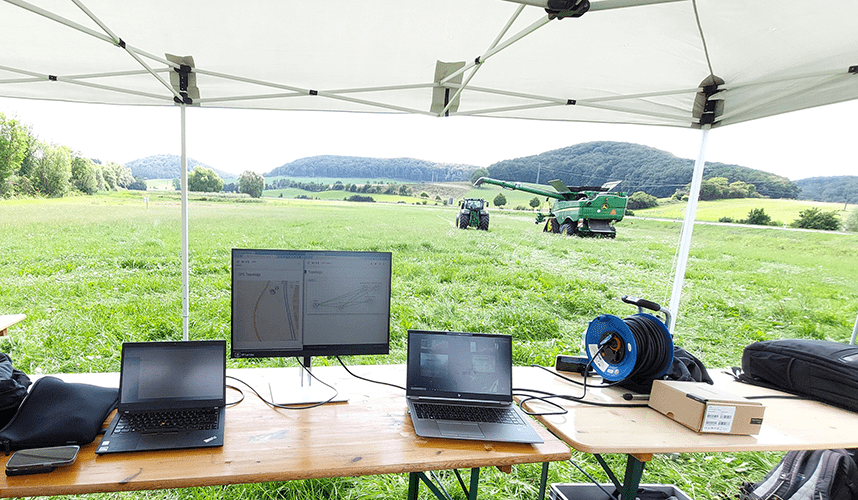
Demonstration Outcomes: Elevating MachineSync
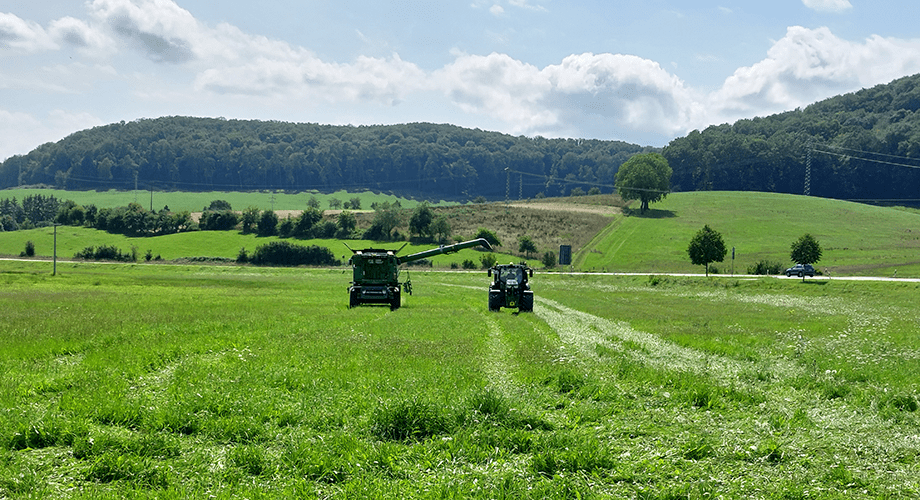
Meshmerize seamlessly integrated with John Deere’s MachineSync, elevating its capabilities to new heights of operational excellence. Evaluation metrics reveal sharp improvements in both coverage and reconnection time. Here’s a glimpse at the results:
Meshmerize provided full coverage for more than 100 meters in front of and behind the leader. Our system achieved high reliability packet transfer with less than 5ms jitter. The reconnection time was just one second, ensuring minimal downtime.
Meshmerize enabled seamless entry and exit of vehicles into the network, enhancing operational fluidity. Meshmerize introduced the capability for multiple followers and message relaying, widening the scope of collaborative tasks.
Meshmerize is designed to complement the evolving needs of modern agriculture, offering a range of features that can enhance operational efficiency.
- Ensures machine connectivity as long as they are in line of sight.
- The solution is plug-and-play, allowing farmers to focus on their operations knowing that the network is ready to go as soon as the equipment is powered on.
- Enables the routing of critical packets with higher priority.
- It’s completely wireless, eliminating the need for additional cabling or infrastructure.
- The network heals itself and adjusts dynamically to the moving equipment.
- Keeps the data safe and confined within the local network.
- With our network management tool Hive, operators can manage the network by visualizing network topology, configuring devices in batches, and troubleshooting proactively, enhancing the efficiency of agricultural operations.

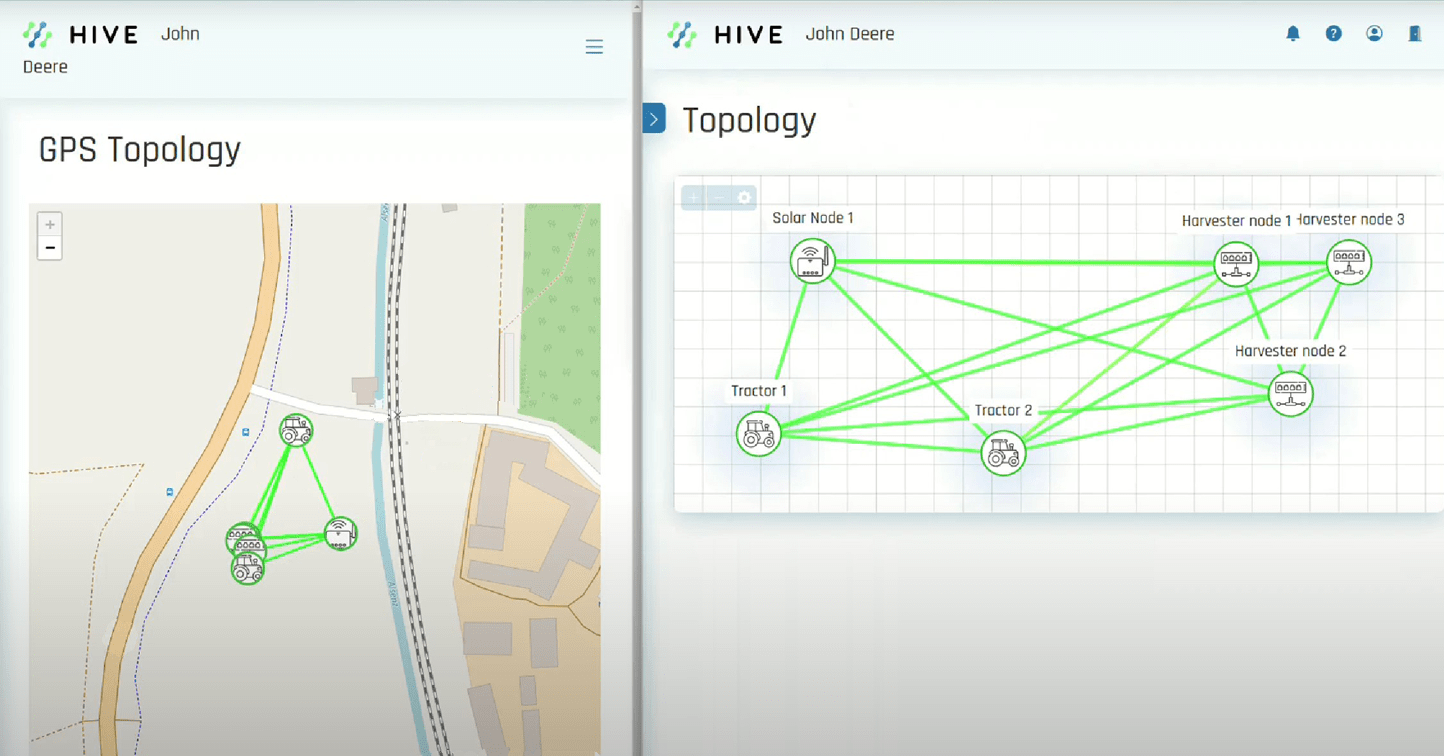
During the field test, Meshmerize not only addressed key operational topics but also introduced Hive. This web-based tool provides a real-time overview of the entire Meshmerize network and integrates seamlessly with GPS systems for comprehensive data analysis.
Hive’s visualization capabilities are game-changing, allowing users to see and manage networks effortlessly. Nodes, whether static or dynamic, are displayed on a map, facilitating batch configuration and proactive troubleshooting.
This network management tool streamlines adding or removing nodes, supports secure remote access via VPN, and offers a secure environment for each deployment. Designed for simplicity, Hive takes the complexity out of network management, making it accessible for farmers and operators focused on agricultural efficiency.
- Meshmerize’s integration with John Deere’s MachineSync extended operational coverage to a 100-meter in front of and behind the leader, effectively eliminating blind spots.
- Reconnection times in the mesh network were just one second, minimizing machine downtime.
- The system achieved high reliability packet transfers with less than 5ms jitter.
- Meshmerize enabled MachineSync to support multiple followers and message relaying, enhancing the scope for collaborative tasks.
- The self-adjusting wireless mesh network eliminated the need for additional infrastructure, providing a zero-setup solution perfect for the dynamic needs of modern agriculture.





